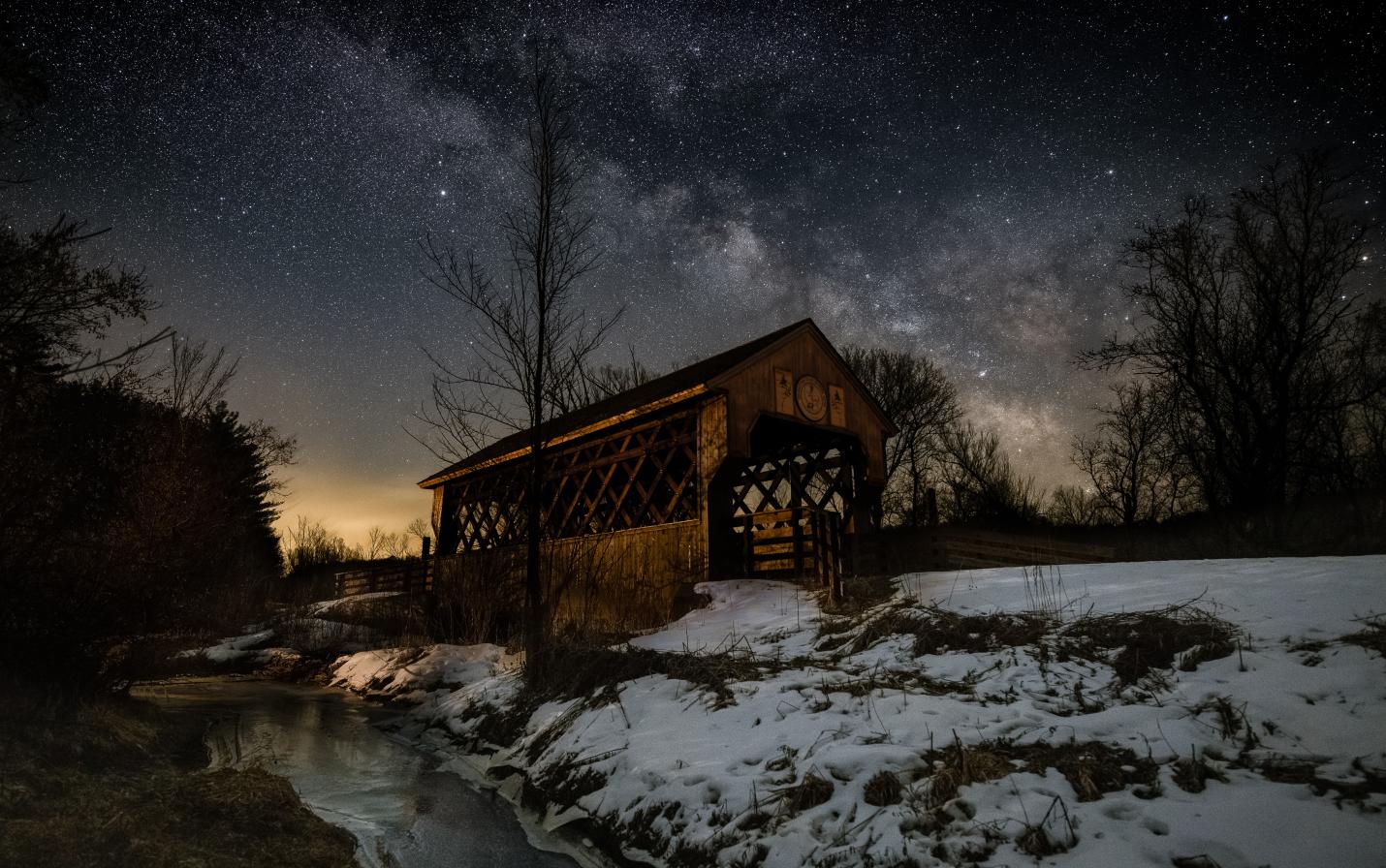
It’s a delight to get away from city lights to enjoy the sights of planets, stars, and galaxies on clear, dark nights. Like old friends, the heavenly bodies above give us a sense of place, memories of the past, and musings about other life in the universe. But dark skies are becoming scarce, and that’s affecting wildlife, people, and the planet.
For many wildlife species, dark skies are key to survival. They depend upon the darkness of night for migration, navigation, protection, and good hunting. Artificial lighting disrupts many of those activities, and big city lights aren’t the only problem. Street lights, farmyard lights, and even home lighting contribute to light pollution. One tragic result occurs when insects that birds need for food fly toward artificial lights and birds follow them, resulting in confusion, exhaustion, and fatal collisions for many birds – especially during migration seasons.
The good news is that there are many ways to effectively light homes, businesses, and cities while minimizing light pollution. Properly shielded and downcast lighting, along with the use of the right light bulbs, reduces light pollution and saves energy while minimizing the disruption of artificial light.
To help protect dark skies in an area with a high level of biodiversity, Mississippi Valley Conservancy, Wildcat Mountain State Park, and Kickapoo Valley Reserve (KVR) have announced that they are working together to designate 13,300 acres of Tunnelville Cliffs, Wildcat, and KVR as Wisconsin’s second International Dark Sky Park. The International Dark-Sky Association awards this distinction to “land possessing an exceptional or distinguished quality of starry nights and a nocturnal environment that is specifically protected for its scientific, natural, educational, cultural heritage, and/or public enjoyment.”
The application process requires a sky quality survey, lighting inventory and management plan, community partners, and education and outreach. The partners are being assisted in this initiative by John Heasley, Marla Lind, Scott Lind, and Susan Cushing.
The benefits of creating the Kickapoo Valley Dark Sky Park include a healthier community and ecosystem, the financial benefits of astrotourism, the pride of being a world-leading community, and financial savings owing to reduced energy usage. But most important is preserving our heritage of starry skies for the enjoyment and awe of future generations.
Tunnelville Cliffs, one of the nature preserves you’ve protected, is part of the proposed Kickapoo Valley Dark Sky Park, and you can see our recommended stargazing points on the trail map for that property on our website. Exploring the dark skies of the Kickapoo Valley is simple. Turn off your lights, give your eyes time to adapt to the dark, and look up. Print or pick up a copy of the monthly Sky Map (skymaps.com) to find your way around. Using a red light to find your way around in will help to preserve your night vision and binoculars will help you to see more colors and details. Please be considerate in your use of artificial light at night so that others may enjoy the view. And watch our calendar for stargazing events in 2023!
The project partners intend to share practical information to help individuals, businesses, and communities to conserve light, energy, and money by improving their lighting. Some of this information is already available at www.darksky.org.
Above: "Around the bend" photo by Dave Delap shows the Milky Way over a covered bridge at Kickapoo Valley Reserve in the proposed Dark Sky Park.